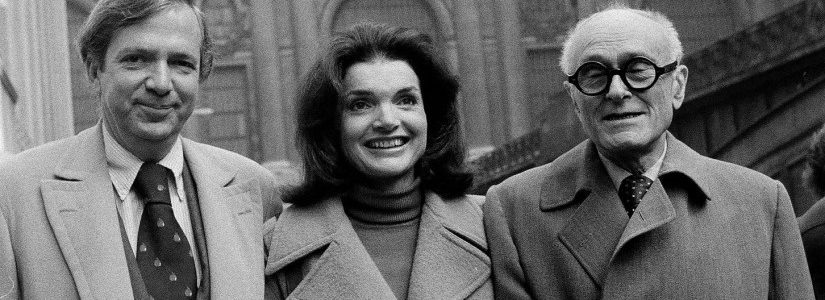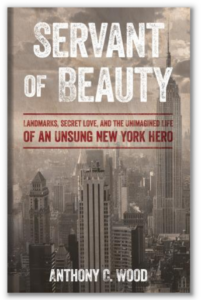
In Memoriam: Frederic Stuart Papert
October 25, 2016
Article from the Fall 2016 Newsletter
Frederic Stuart Papert, co-founder of storied advertising agency Papert Koenig Lois and prominent preservationist, passed away on May 20, 2016, at the age of 89. Papert was born in Manhattan in 1926 and attended P.S. 6 on the Upper East Side, enrolling in high school in Miami following his family’s move to Florida. Papert studied journalism at the University of Missouri while also working as a salesman at the Kansas City-based Woolf Brothers department store.
In 1960, the 34-year-old Papert started his own advertising agency with Julian Koenig and George Lois. Papert Koenig Lois worked with a broad range of clients, from Xerox to Robert F. Kennedy’s 1964 Senate Campaign. The successful agency grew to 200-employees and is often cited as an inspiration for Don Draper’s firm on Mad Men. Having achieved a lasting reputation, Papert Koenig Lois was ultimately disbanded in 1969.
As Fred Papert’s career in advertising came to a close, he began utilizing his strengths in public outreach and behind-the-scenes decision-making to great effect in New York City’s preservation movement. One of Papert’s earliest efforts in the field was the founding and management of Carnegie Hill Neighbors, an organization that was instrumental in rezoning much of the Upper East Side neighborhood to a maximum height of 18 stories. The organization continues to preserve, protect, and improve the neighborhood today.
Beyond Papert’s home base of Carnegie Hill, he also took a leading civic role across New York City. Working with Jacqueline Kennedy Onassis and Kent Barwick, Papert helped lead the effort to preserve Grand Central Terminal from then-owner Penn Central Company’s plans to redevelop the landmark. Ultimately, in proving that Penn Central lacked the economic necessity required to alter Grand Central Terminal’s original design, Papert helped to insure that the Beaux-Arts masterpiece would not meet a similar lamentable fate as the demolished Pennsylvania Station.
Through his involvement with the Municipal Art Society, where he served as president from 1975 to 1976, Papert was also a key proponent for the conversion of the Farley Post Office into Moynihan Station, as well as halting the proposed construction atop St. Bartholomew’s community house. Papert also served as a board member for the New York Landmarks Conservancy and the Henry Street Settlement.
Founded by Papert in 1976, the 42nd Street Development Corporation is perhaps one of his greatest accomplishments. According to Papert, the company was formed “to rescue West 42nd Street from four decades of misuse and neglect,” with the ultimate goal of recreating “a river-to-river grand boulevard that would have a major impact on the economy of New York City and the tri-state region.” This redevelopment was to be based on the restoration of dilapidated theaters across Times Square and the construction of mixed-use developments. As noted by Papert during the “Sages and Stages” speaker series that the New York Preservation Archive Project hosted in 2004, the feasibility of 42nd Street’s revitalization benefited from the clever use of zoning which allowed mid-block theaters to transfer their air rights. This led to theatrical groups such as the Shubert Organization, which owned several theaters, to gain as much as $50-60 million, portions of which they could reinvest in their theaters and the surrounding area. The transcript of this forum, which is included in the Archive Project’s online Oral History Collection, also includes Papert’s perspective on the politics of preservation, analyzes various preservation-related publicity campaigns and court battles, and addresses more recent debates over new construction in Carnegie Hill and the redevelopment of the far West Side.




